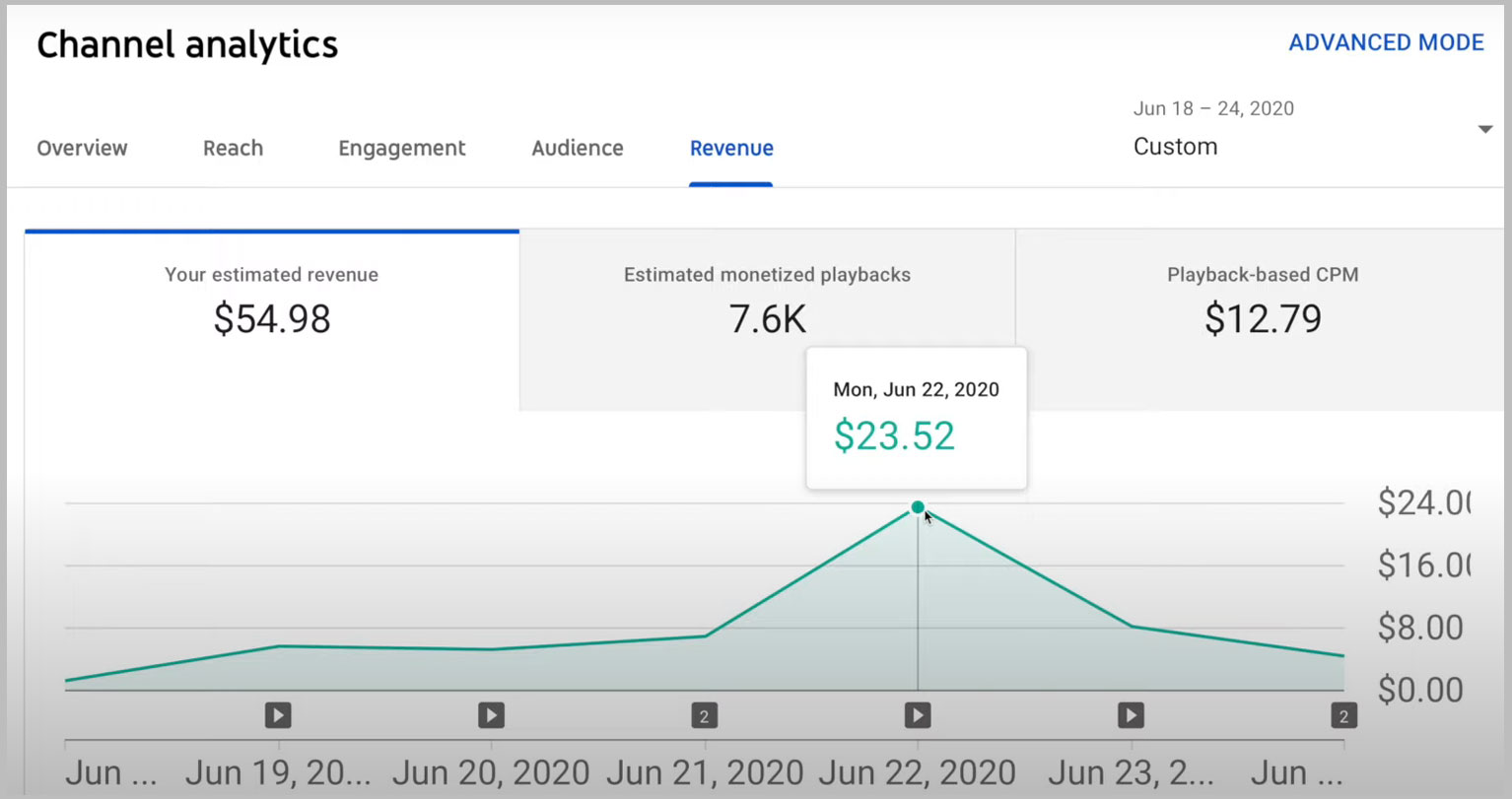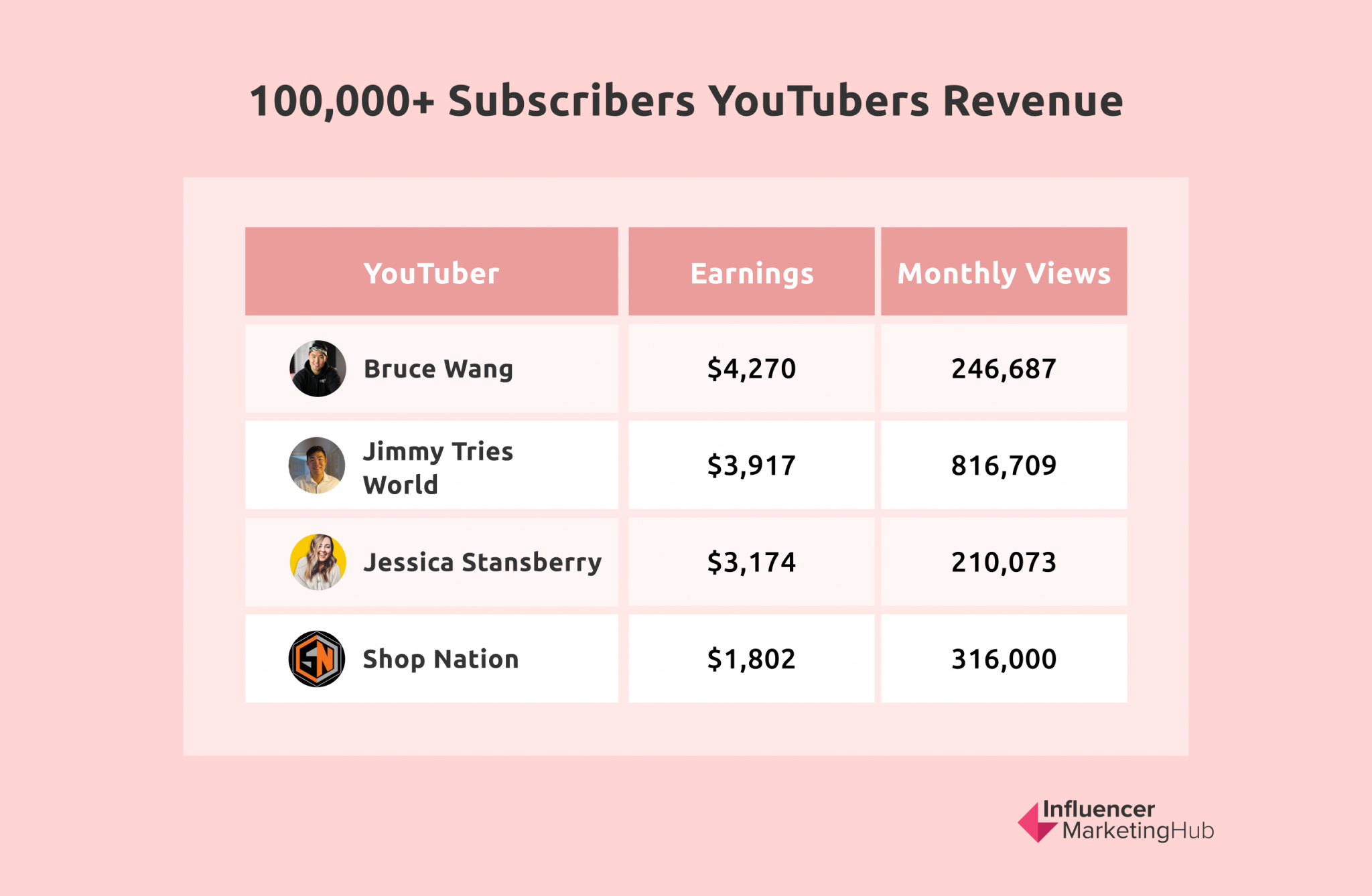Ever wondered how YouTubers turn views into revenue? You’re not alone! With millions of videos uploaded daily, understanding YouTube monetization can feel overwhelming. In this post, we’ll dive into how ad revenue works and what factors can influence earnings, especially when you hit that magic number of 200,000 views. Let’s break it down!
Introduction to YouTube Monetization

YouTube monetization is the process through which creators earn money from their content, primarily through ads. To unlock this revenue stream, creators must join the YouTube Partner Program (YPP), which requires:
- At least 1,000 subscribers
- A minimum of 4,000 watch hours in the past 12 months
- Compliance with all YouTube policies and guidelines
Once you're in YPP, ads can be displayed on your videos, and you earn money based on views and clicks. But how much can you make from those 200,000 views?
The answer varies. YouTube has a system of different ad types:
- Display Ads: Shown beside the video, not interrupting the viewing experience.
- Overlay Ads: Semi-transparent ads that appear on the lower part of the video.
- Skippable Video Ads: Ads that viewers can skip after 5 seconds.
- Non-Skippable Video Ads: Viewers must watch these ads before the video begins.
- Bumper Ads: Short, non-skippable ads of up to 6 seconds.
Generally, YouTube pays creators based on a metric called CPM (Cost Per Mille), which is the cost per 1,000 ad impressions. CPM can range from $1 to $20 or more, depending on various factors, including the niche and audience demographics.
Now, you might be thinking, "Great, so how much can I expect from 200K views?" A rough estimate is that if you have a CPM of $5 and all views are monetized, you could earn:
200,000 views / 1,000 x $5 CPM = $1,000
However, keep in mind that not all views lead to ad impressions, so the actual earnings can be lower. Other monetization options like channel memberships and merchandise sales can also contribute to overall revenue!
Also Read This: How to Turn Off Captions on YouTube TV: A Quick Accessibility Guide
Factors Affecting Ad Revenue on YouTube

While reaching 200K views is an incredible milestone, several factors can influence how much ad revenue you actually make. Let’s explore some of the key elements:
- Niche: Certain niches, like finance or technology, often have higher CPMs due to their lucrative audience. For example, a tech review channel might have a CPM of $10 or more, while lifestyle channels might see lower rates.
- Audience Geography: Viewers from countries like the USA, Canada, or the UK typically generate higher ad revenue compared to viewers from countries with lower advertising budgets.
- Seasonality: Advertising budgets fluctuate throughout the year. For instance, the holiday season often sees increased ad spending, leading to higher CPMs.
- Viewer Engagement: High engagement levels (likes, comments, shares) can lead to more ad opportunities and better CPM rates. YouTube rewards engaging content!
- Ad Blockers: If a significant portion of your audience uses ad blockers, it directly affects the number of ads served, thus impacting your overall earnings.
Ultimately, while 200K views is a fantastic achievement, maximizing your ad revenue requires understanding and adapting to these factors. Experiment with different content types, analyze your audience's preferences, and don't shy away from collaborations. The more you understand your niche and audience, the better your revenue potential!
Also Read This: How to Clear Liked Videos on YouTube Managing Your Likes
3. Calculating Earnings from 200K Views

So, you’ve hit the milestone of 200,000 views on your YouTube video. That’s fantastic! But now you’re probably wondering, “How much money did I actually make from these views?” The answer isn’t as straightforward as you might think, and it largely depends on several factors, including your niche, audience engagement, and the types of ads displayed on your video.
First, let’s talk about CPM (Cost Per Mille), which is the amount advertisers pay per 1,000 ad impressions. CPM can vary widely, often ranging from $1 to $20. For most channels, especially those in lucrative niches like finance or technology, a CPM of around $10 is common. However, if you’re in a more general niche, it might hover closer to $4 to $7.
To give you a rough estimate, let’s calculate the earnings based on a CPM of $10:
- 200,000 views / 1,000 = 200 (thousand impressions)
- 200 impressions x $10 CPM = $2,000
Of course, this is just a ballpark figure. The actual earnings can fluctuate based on viewer demographics, watch time, and the ad formats used. For instance, if your viewers are predominantly from countries with lower advertising budgets, your CPM might drop significantly.
Another important aspect to factor in is the ad view rate. Not every view translates to an ad impression. Typically, about 40% to 60% of viewers will see ads, depending on how long they watch your video. Using a conservative estimate of 50%, your total earnings might look like this:
- 200,000 views x 50% ad view rate = 100,000 ad impressions
- 100,000 impressions / 1,000 = 100
- 100 x $10 CPM = $1,000
As you can see, understanding CPM and ad view rates is crucial for calculating your YouTube earnings. The more you optimize your content for engagement and watch time, the better your revenue potential!
Also Read This: Can Alexa Play YouTube Audio
4. Types of Ads on YouTube and Their Impact on Revenue
YouTube offers several types of ads, and each has its own impact on revenue. Understanding these can help you strategize your content and maximize earnings. Let’s break them down:
- Display Ads: These appear on the right-hand sidebar of the video and are visible while the video plays. They typically earn lower CPMs but can still contribute to overall revenue.
- Overlay Ads: These semi-transparent ads appear on the lower part of the video. They are often less intrusive, which can mean higher engagement, leading to better earnings.
- Skippable Video Ads: Viewers can skip these ads after 5 seconds. They usually have higher CPMs because advertisers know they can appeal to engaged audiences.
- Non-Skippable Video Ads: These ads must be watched in full, often leading to higher revenue per view. However, too many can frustrate viewers, possibly leading to lower engagement.
- Bumper Ads: Short, 6-second ads that viewers can’t skip. They’re great for brand awareness and tend to have competitive CPMs.
Each ad type can affect your overall revenue differently. For instance, skippable ads might yield less revenue per impression compared to non-skippable ads, but if viewers are watching longer, they can lead to a greater number of impressions overall.
In conclusion, understanding the types of ads and their performance can help you create content that not only attracts viewers but also increases your earnings. Experimenting with different ad types and observing which resonate best with your audience is key to optimizing your YouTube revenue strategy!
Also Read This: How to Remove Videos from Your YouTube Playlist: A Quick Guide
5. Case Studies: Real Examples of Earnings
Understanding YouTube ad revenue can be quite abstract without real-world examples. Let's dive into some case studies that illuminate how different creators earn from their channels after hitting that coveted 200K views mark.
*Case Study 1: Tech Review Channel
A tech reviewer with 200K views on their latest gadget review earned approximately $800 in ad revenue. The niche is lucrative due to higher CPM (cost per mille) rates, often reaching $20 or more because tech products are usually high-ticket items. Their strategy included:
- Affiliate marketing links in the description, earning an additional $300.
- Sponsored segments which paid $500 for the video.
This creator's total earnings from a single video? Around $1,600!
Case Study 2: Lifestyle Vlogger
A lifestyle vlogger with engaging content garnered 200K views on a “Day in My Life” video. Their ad revenue was much lower, at about $300, due to the lower CPM rates generally associated with lifestyle content, averaging around $10. However, they supplemented their earnings through:
- Merchandise sales totaling $200.
- Brand partnerships worth $400.
Thus, this creator made an impressive $900 from a single video!
Case Study 3: Educational Channel
An educational channel focused on finance and budgeting also reached 200K views on a “How to Save Money” video. Their earnings were quite remarkable: $1,200 in ad revenue, given the CPM for educational content can be around $15. This creator further boosted their income by:
- Offering online courses that generated $1,000.
- Donations via Patreon, adding another $300.
In total, they earned $2,500 from one video, showcasing how valuable educational content can be!
These examples demonstrate how diverse YouTube earnings can be based on content type, audience engagement, and revenue streams. By understanding various case studies, creators can better strategize their own channels to maximize income.
6. Tips to Increase Your YouTube Ad Revenue
Ready to boost your YouTube ad revenue? Here are some practical tips that can help you elevate your earnings after hitting that 200K views milestone:
1. Optimize Your Video Titles and Thumbnails
Your title and thumbnail are crucial for attracting clicks. Use eye-catching designs and keywords that resonate with your target audience. A/B testing different thumbnails can help determine which ones yield higher click-through rates.
2. Focus on Niche Content
Creating content within a specific niche generally attracts a targeted audience, which can lead to higher CPM rates. For instance, finance-related videos tend to earn more because advertisers are willing to pay for that audience.
3. Engage Your Audience
Encourage viewers to like, comment, and subscribe. Higher engagement can lead to better video rankings and more views, ultimately boosting your ad revenue. Consider asking questions or starting conversations in your videos.
4. Utilize End Screens and Cards
Promote your other videos through end screens and cards to keep viewers watching. More views on your channel can lead to increased revenue as more ads are served.
5. Explore Multiple Revenue Streams
Don’t just rely on ad revenue! Look into affiliate marketing, merchandise sales, and brand partnerships. For instance, if you're a beauty vlogger, partnering with makeup brands for sponsored content can significantly enhance your earnings.
6. Analyze Your Analytics*
Regularly review YouTube Analytics to understand what works. Pay attention to watch time, traffic sources, and demographics. Use this information to fine-tune your content strategy and focus on what's driving your revenue.
By implementing these strategies, you can significantly enhance your YouTube ad revenue and create a sustainable income from your channel. Remember, growth takes time, so stay consistent and keep experimenting!
 admin
admin








